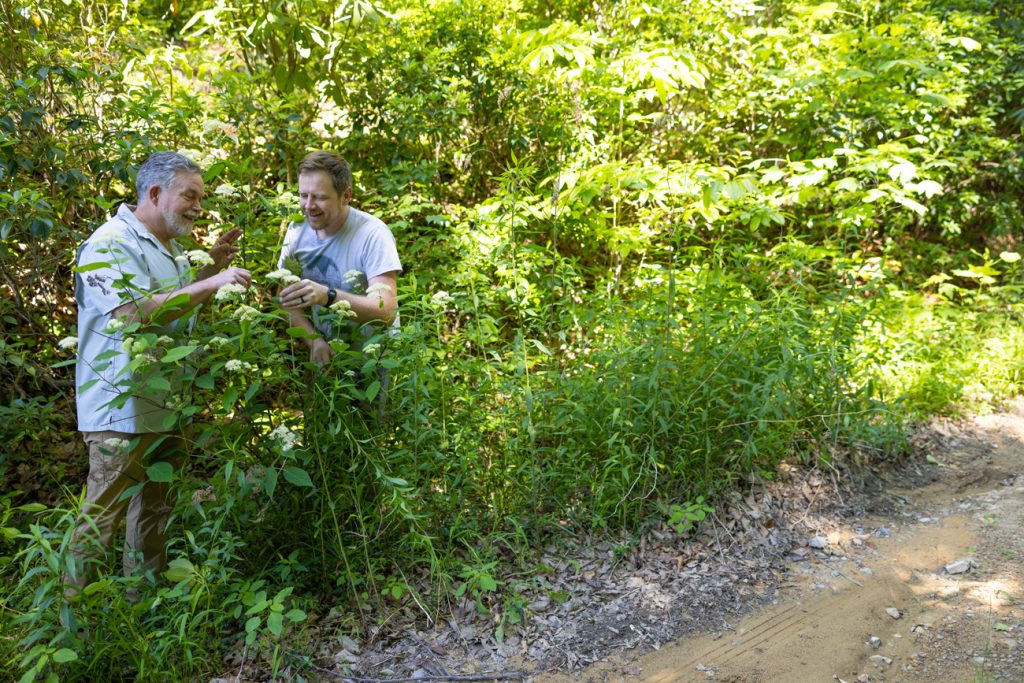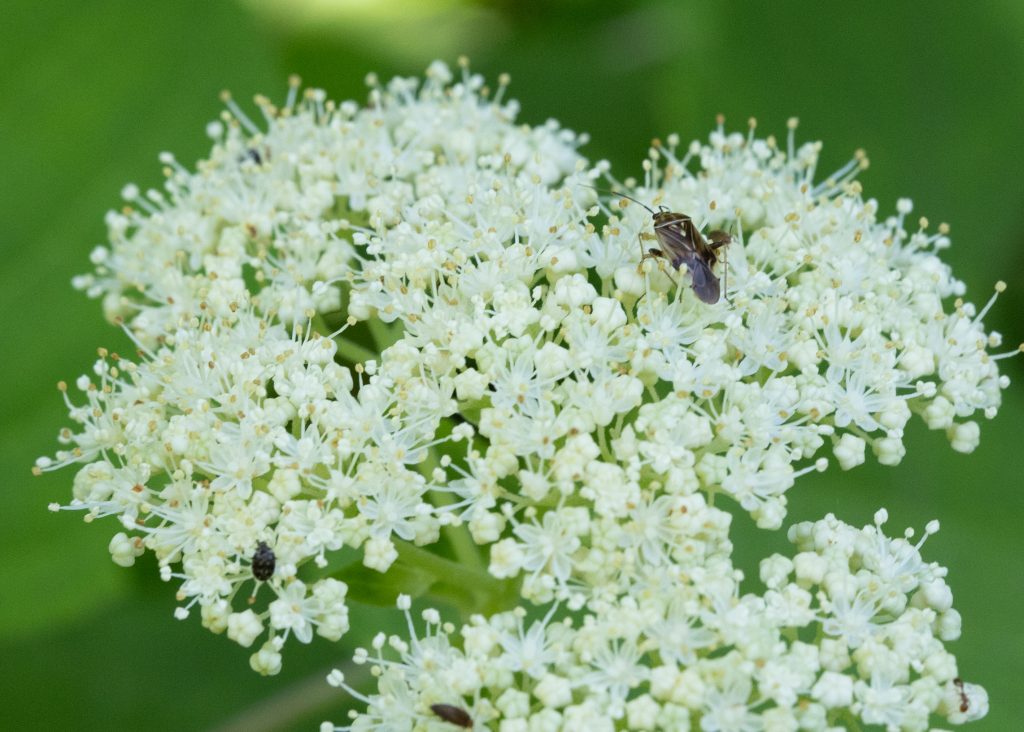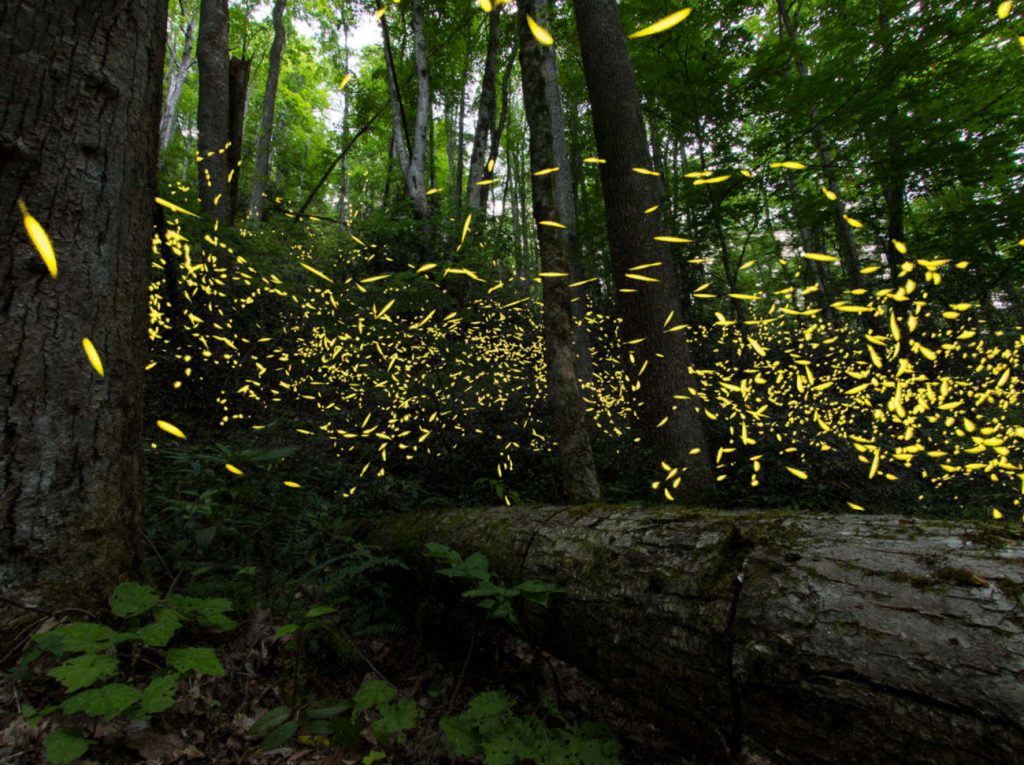Volunteers only need walking shoes and a phone to participate in a huge documentation effort
Can you spare a day for the Great Smoky Mountains? If you can walk through the woods and use an app on your phone, you can be part of a bioblitz. You’ll be searching for arthropods: insect and insect-related creatures with no backbone — teeny little creatures like walkingsticks, crayfish, coneheads, springtails, waterbears and lichen, a combination of algae and fungus that can be found on a rock or a tree.
Why would anybody want to search for tiny bugs? Because these creatures are the foundation for everything that lives in the park, says biologist Todd Witcher. “People love bears and elk,” he says. “People may not love bugs, but bugs are the foundation of the food chain and provide ecosystem services like clean air, water and food.”
Witcher is director of Discover Life in America, where he has served for 17 years. The nonprofit has a gigantic undertaking: to document every tiny arthropod in the Smokies. The small group works with park staff, researchers, and volunteers to study biodiversity in the park and educate others about its importance in our lives and its necessity to preserve the richness of life on earth.

“We collect information and supply that to the park and they determine how best to protect these organisms,” he says. “We’re on the frontline of determining what lives here. There are a lot of things that live here that we have not identified yet. For example, if you’re thinking of fireflies, most people think of one particular firefly, but there are 19 different fireflies in the park. They all light as larvae, but not all light as adults. It’s the variety of genes within the pool of living things.”
Over the last 26 years, the program has made huge strides, adding thousands of documented arthropods, some never discovered anywhere else in the world.
“Since 1988,” Witcher says, “DLiA has worked in partnership with the Great Smoky Mountains National Park (GSMNP) to conduct an All-Taxa Biodiversity Inventory (ATBI), a comprehensive inventory of all species occurring within the GSMNP. By leveraging new technologies, engaging the public in community science projects, and collaborating with scientists from around the world, DLiA has successfully doubled the number of known species in the park, adding over 12,000 new species to the park records—including the scientific discovery of 1,084 new species (new species to science).”
“The number of identified lichen has risen from 340 to 958,” Witcher says. “Sixty-four of those had never been documented before anywhere on earth. In the fungi category, 71 new species to science have been discovered here.”
“Nobody knows we’re here or what we do,” he says. “Our biggest need is support that would allow us to expand and speed up the identification of all the specifies. Species are disappearing. Threats to biodiversity in the park include climate change, invasive species, development, over visitation, and air pollution. We like to say if you don’t know about a species, it would be hard to protect it.”
Witcher says the nonprofit was launched 26 years ago when University of Pennsylvania professor Dan Janzen came up with the idea that the best conservation effort would include knowing everything within a space, that an All-Taxa Biodiversity Inventory (ATBI) should be created.
According to Janzen’s biography at the University of Pennsylvania website, he asked questions such as, “Why do caterpillars eat the plants they eat? Why do parasitoids (wasps and flies) eat the caterpillars they eat? And why do they do it that way in a complex dry forest, rain forest, and cloud forest in northwestern Costa Rica?” Janzen’s idea of a complete inventory was adopted and in 1997 an ATBI was launched in the Smokies.


“That kicked off the beginning of our organization and we started working with scientists everywhere,” he says. “The thing about this park is that a lot was known – birds, bears, etc. – but not a lot was known about all the other things. In looking at global biodiversity, only a small fraction is vertebrates. About two-thirds of global biodiversity is arthropods (bugs and relatives). These make the foundation for all these other things to be able to live.”
The organization estimates 60,000-80,000 species of life are in the park, the dlia.org site reports. The ATBI is a tremendously large research program, so large that the National Park couldn’t devote the time and resources necessary to start and maintain it. Discover Life in America was founded as a nonprofit to secure the funding and organize the scientists to being this ambition effort. The ATBI does more than just count the number of arthropods in the park. It focuses on understanding habitats, ecosystems and relationships between species. DLiA documents and reports their findings to the park.
“The park wants to know what is here,” Witcher says. “What does it do? Is it a predator, prey, or pollinator? Where is it found in the park and how does it interact? And is it rare or common?”
For instance, he says, if there were a rare bee pollinating a rare plant and that bee disappeared, the plant would also disappear. The nonprofit would let the park know about the endangered bee, and a plan could be devised to protect it. Or take the Hemlock Wooly Adelgid, an introduced insect that is killing the hemlocks. “Our job is to identify species and the park’s job is to decide what they need to do with the information,” he says. “Do we need to protect this more, or create a plan to eliminate it?”
There is so much work left to be done that Discover Life in America has created a program called Smokies Most Wanted to recruit arthropod-searching volunteers. Armed with phones and an app called iNaturalist, volunteers of all ages have photographed and identified the tiniest of creatures, but thousands more are waiting to be documented.

In partnership with the Tennessee Valley Authority, Discover Life in America created iScience, a schoolyard biodiversity program designed for students in grades 5 through 8. The program encourages students to become community scientists, studying local plants, animals, and other life. iScience uses the All-Taxa Biodiversity Inventory model, bringing ATBIs to schools within the TVA iScience Program area. Students conduct ATBIs at their schools using the iNaturalist app, collecting real scientific data about local biodiversity.
Discover Life in America is not financially funded by the national park, but relies heavily on donors.
“We host an annual firefly event called Fireflies at Norton Creek,” Witcher says. “The event is on land that abuts the park and the owners allow us to have an event there to sell tickets to see synchronous fireflies. We usually sell about 50 tickets per night.”
For more information about how to donate or how to volunteer as part of the Smokies Most Wanted, visit dlia.org.

Comments are closed.